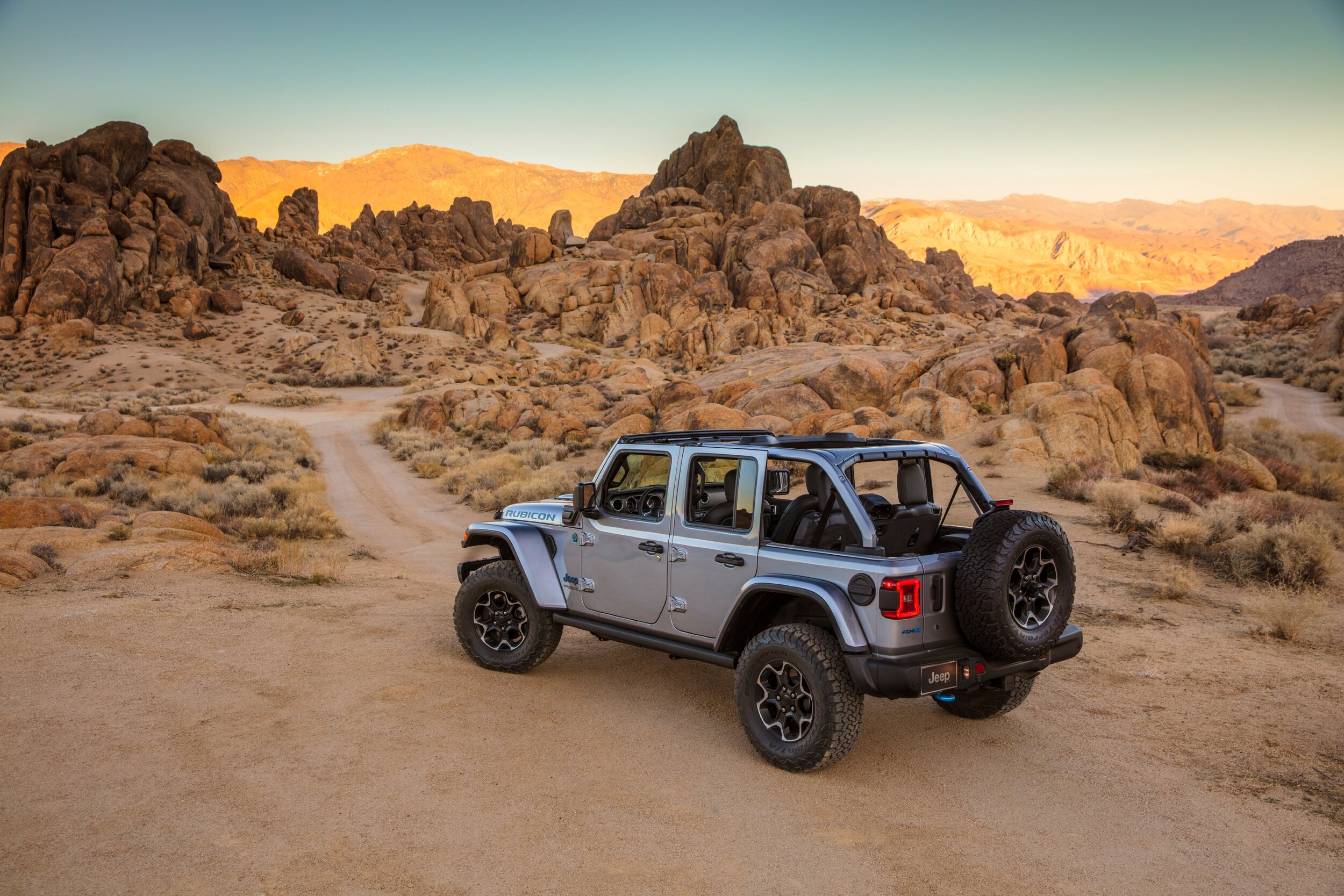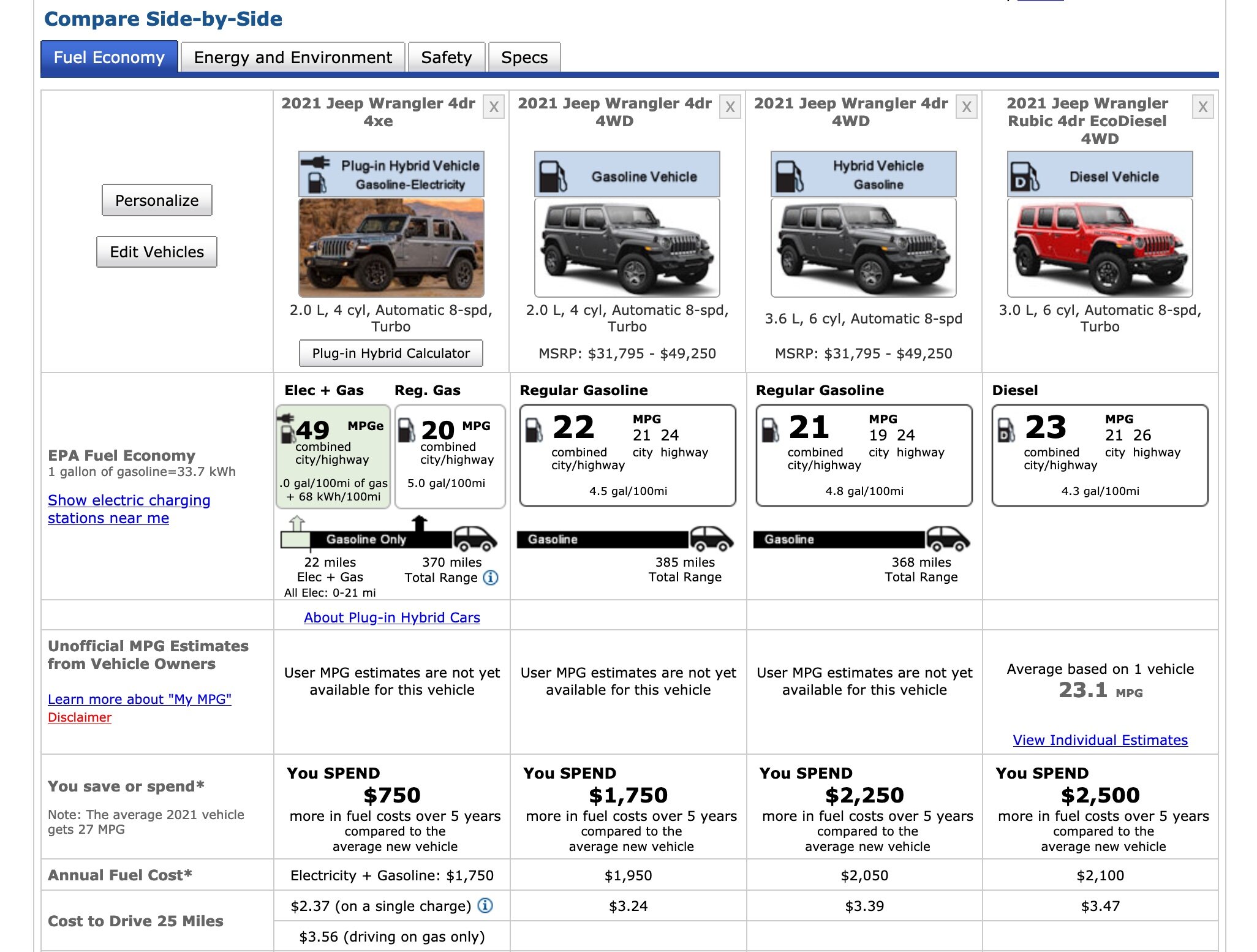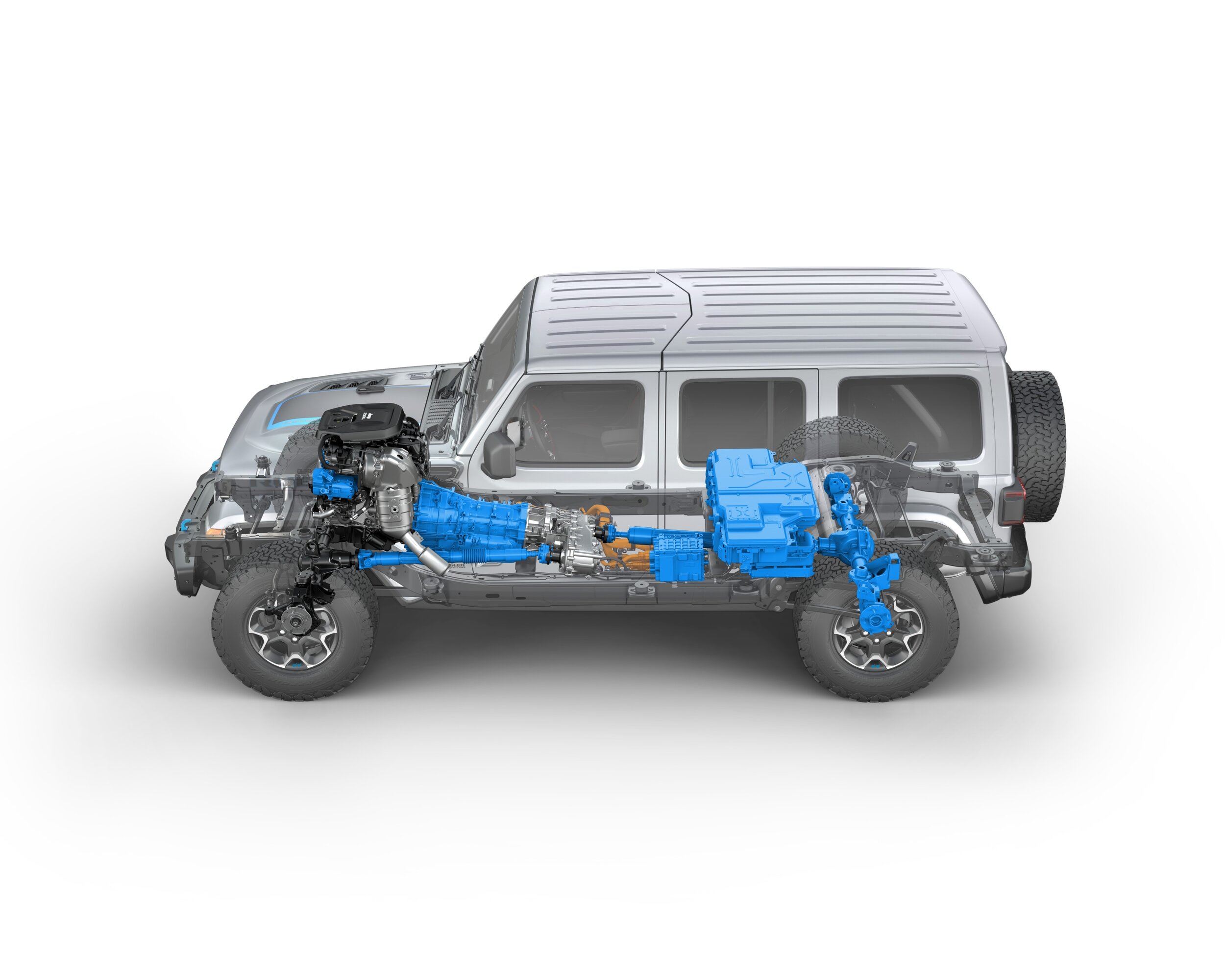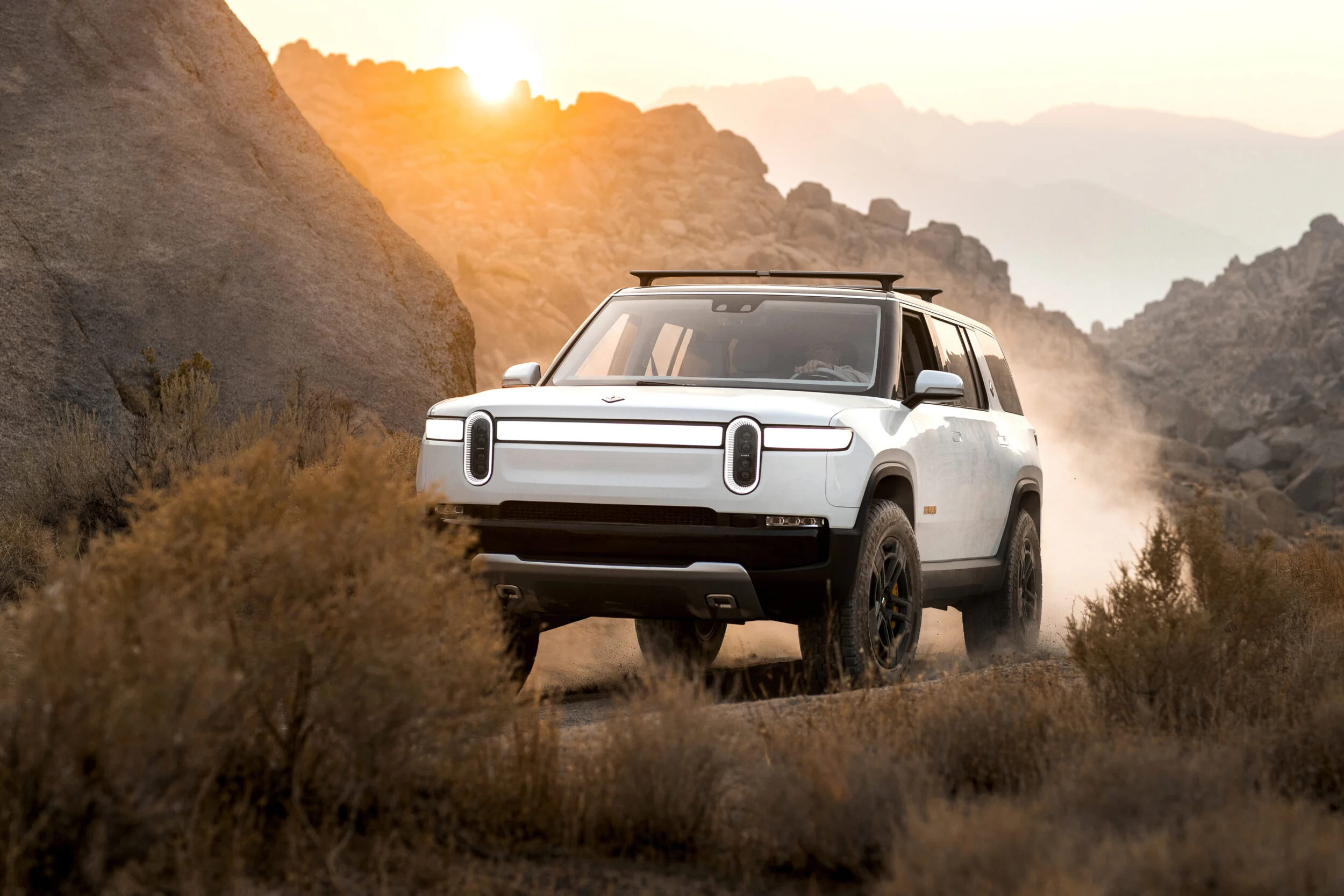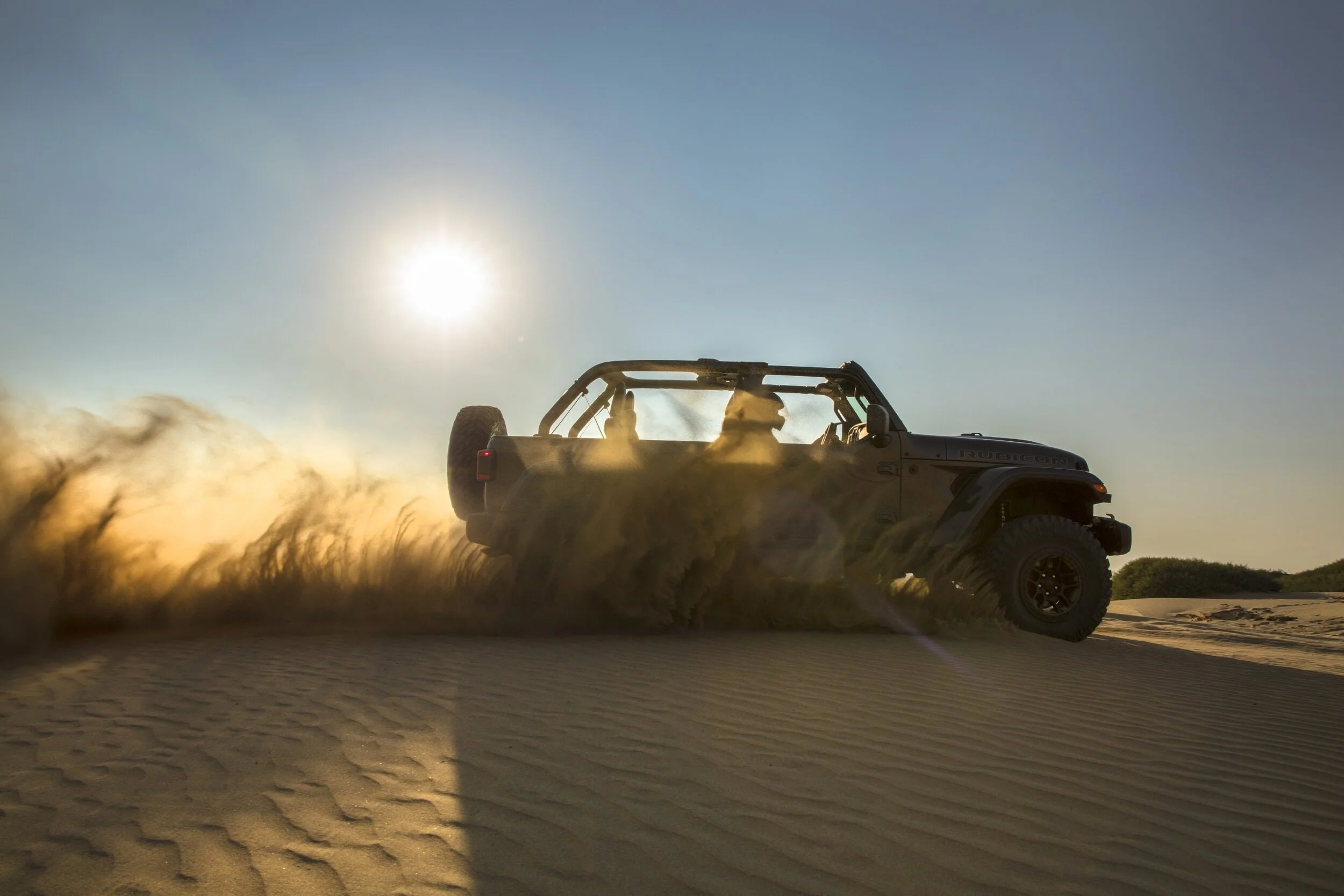Jeep Wrangler 4xe Gas-Only Fuel Economy is Horrid
By Edward A. Sanchez – Mach 19, 2021
Fuel economy figures have just been announced for the 2021 Jeep Wrangler 4xe. When plugged in and fully charged, it gets a combined fuel economy figure of 49 mpg, more than double any other Wrangler model. However, if left unplugged, the 4xe returns a combined EPA average of only 20 mpg, making it the worst Wrangler in terms of combined fuel economy, aside from the Hemi-powered Rubicon 392, which guzzles to the tune of 13 mpg city, 17 mpg highway, and 14 mpg combined, as we had previously predicted.
Plug-in hybrids are one of the trickiest types of vehicles to explain, and probably one of the most misunderstood by consumers. Are they electric? Are they gas? Are they hybrids? Yes to all three, to some extent. Even within the PHEV realm, there is a wide variation of types and specifications, with all-electric ranges ranging from just a little over 10 miles to nearly 50 or more. If plugged in and charged regularly, PHEVs promise all-electric driving for many drivers for most of their shorter trips. Meanwhile, some buyers opportunistically buy PHEVs for the HOV access decals, never bothering to plug them in.
A side-by-side comparison of the Jeep Wrangler lineup reveals that if you don’t plug in the 4xe, you’ll pay for it at the pump.
ICE defenders are sure to pile on with the FUD and schadenfreude toward the 4xe: “See? The hybrid is actually the biggest gas hog! LOL! Epic fail!” To be sure, it’s not the best look for the 4xe. However, if used as intended, and owners take full advantage of the charging, the 4xe could have a lifetime average fuel economy significantly higher than any of its stablemates.
The Wrangler has several inherent traits working against it from the get-go. It has a horrible drag coefficient of 0.45. This is simply endemic to its upright, squared-off styling, flat windshield, and high ride height. Add popular upgrades like 35- or 37-inch tires, lift kits, winches, and other bolt-on accessories, and the efficiency will tumble further. Case in point, my father-in-law, who owns both a 2016 Wrangler JK Rubicon and a 2015 GMC Sierra 2500 Duramax, says the truck, which weighs approximately 3,000 pounds more than the Jeep and has roughly triple the torque output, gets significantly higher real-world average fuel economy.
The Wrangler 4xe is a plug-in, but if you choose to never charge the battery, fuel economy will suffer likely thanks to the heft of the electrified components.
Just looking at the fuel economy rating for the 4xe does give me some concern for the range and efficiency of the inevitable upcoming full electric Wrangler, soon to be previewed by the Wrangler Magneto concept. The trick with EVs isn’t simply just sticking an ever-larger battery into the floor. It’s balancing the vehicle’s energy needs while keeping overall weight in check. Large, high-kWh batteries are still very heavy, and although getting lighter and more efficient, still add a significant amount of extra weight compared to the equivalent energy density in a gallon of gasoline.
The 4xe offers everything that makes a Wrangler a Jeep, including knobs and levers to operate a stout transfer case. The 4xe even sports the quintessential (and not very aerodynamic) near-vertical Jeep windshield.
200 miles is emerging as the new bare minimum for EVs in the North American market. Let’s assume – for argument’s sake – the production Wrangler EV gets a rating of 60 MPGe. That works out to an energy consumption of 56.175 kWh/100 miles. So, to give the Wrangler Magneto a range of 200 miles would require a 112 kWh battery, or a little more than that of a Tesla Model S P100D. We don’t yet have the battery specs of the upcoming Plaid+ model, but we’re talking about big packs here. For comparison, Rivian has announced capacities of 135 kWh and 180 kWh for its R1T and R1S pickup and SUV. And these are purpose-built EVs with “skateboard” chassis. By all indications, the Wrangler Magneto will be an adaptation of the existing JL chassis, complete with driveshafts, differentials, and possibly, a two-speed transfer case. Getting a Wrangler EV to 200 miles will be a major engineering challenge to stuff all the batteries under the chassis while maintaining the off-road prowess Wranglers are famous for.
I don’t want to prematurely sandbag the Wrangler EV, but Jeep’s engineers have a monumental task ahead of them making it practical, useable, and affordable, while meeting customer’s expectations for range and capability. I wish them the best.
(Images courtesy Jeep)
- Podcast - Facebook - Google News - Twitter -



